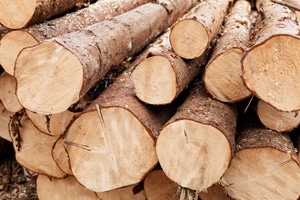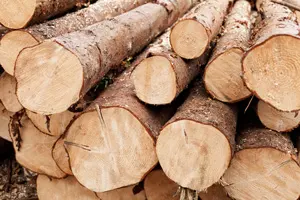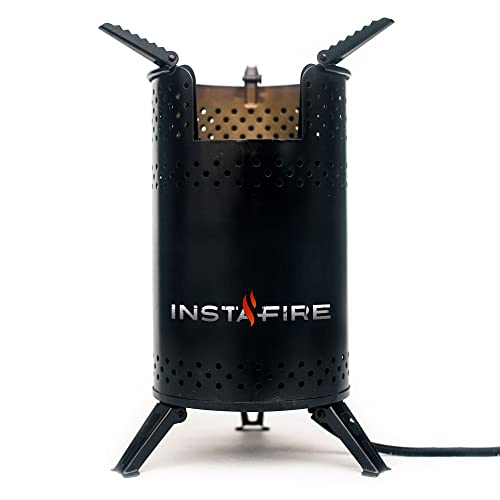
Wood Biomass Energy
Facts About Wood Biomass Energy
![]() Wood Biomass Energy when used as a fuel has many environmental advantages over the use of traditional fossil fuels. The main advantage is that wood is a renewable resource like solar, water or wind power thereby offering a sustainable and dependable energy resource, unless improperly managed.
Wood Biomass Energy when used as a fuel has many environmental advantages over the use of traditional fossil fuels. The main advantage is that wood is a renewable resource like solar, water or wind power thereby offering a sustainable and dependable energy resource, unless improperly managed.
Other advantages of wood biomass energy is the fact that the amount of carbon dioxide gas emitted during the combustion process is a lot less than when burning conventional fossil fuel and as such has the ability to provide a much cleaner burning process.
For many decades now, sustainably controlled and produced wood biomass has become a significant source of renewable energy while at the same time through forestry management techniques maintaining the natural environment.
But what is biomass, and how can we use it. “Biomass” is the collective term for organic matter used as fuel and so covers a wide range of organically sourced materials which can be used for energy production and other purposes. Amongst these organic substances is Wood Biomass derived from forests, woodlands and other arboricultural activities from saw mills and used as a source of wood fuel.

Wood biomass energy sources which are used as a fuel can be safely stored and preserved in the form of logs or chippings without any potential energy loss.
The amount of energy that can be produced from woody biomass depends on the heat content of the material when it is dry. Storing the wood in dry well ventilated conditions prior to its burning reduces its moisture content thereby increasing its heating value and efficiency.
The higher temperatures gained from burning drier wood also results in more heat per unit weight of raw wood fuel, again increasing efficiency. Also wood fuel contains minimal amounts of sulphur and heavy metals and therefore is not a threat to acid rain pollution.
Wood fuel is bulkier and contains more volatile ingredients in comparison to coal, leading to the need for less expensive stoves and boilers for its combustion. Today, the new style biomass stoves are capable of burning a wider range and variety of wood biomass for heat energy.
There are several wood biomass fuels available produced directly from wood or wood wastes and these including:
Types of Biomass Energy Sources
- Logs, Trees and Timber
- Wood Shavings, Sawdust or Sawn off-cuts
- Wood Chips and Tree Bark
- Fuel Pellets and Wood Briquettes
When considering specific forms of wood biomass for energy or as a fuel for cooking and heating purposes, it is important to ensure that the wood fuels quality and characteristics are suitable for the chosen appliances. Modern boilers utilizing wood in gasification processes extract the energy contained in the wood.
If the wood fuel is too wet, for example, the boiler will not operate efficiently. The best way to achieve recommended wood moisture is to cut the wood fuel during the wintertime and then let it season possibly for up to a year if very wet.
Small logs and loose timber can be used in open fires, closed stoves and manually-fed boilers. The size of logs required varies with the appliance but biomass gasification boilers are adapted for the burning of any kind of wood ranging from sawdust to large chunks of wood.
Semi-automated log boilers can normally take larger logs which can reduce the amount of preparation and handling required keeping costs down. Log boilers are usually fully-loaded and fired in the morning to heat the home or to heat water in a storage tank.
Generally, wood chips are small to medium sized solid woody materials made by chipping or cutting much larger pieces of wood. The resulting wood chips range in size from 0.5 cm2 to 5.0 cm2.
Properly made wood chips are more rectangular in shape, roughly cut and produced by only a small number of types of chipper such as the Eco-Shredder ES1600 Electric Chipper. Note that the types of chips produced, for example, by landscape firms for composting and mulching are generally not suitable as a wood biomass fuel.
Wood chips however, can be used in automatically fed stoves and boilers. Automatic wood biomass energy systems, fed with an auger and/or conveyor, use chipped or pelleted wood which must be the correct size for the feed system to handle and so are generally designed to take wood chips at set specifications. Wood chip boilers can be sensitive to size and moisture content.
Biomass wood pellets and briquettes are man made wood products that can be used in place of logs and timbers in traditional fires and modern log boilers. They range in size from a few millimetres in diameter and length to about 12mm (1/2″) in diameter and 50mm (2″) in length. Wood biomass pellets and briquettes are produced by compressing clean waste wood such as sawdust, wood shavings and joinery off-cuts in a high pressure pellet mill. No additional materials are used as wood pellets must contain only pure wood.
The advantage of wood pellets as a wood biomass energy source is that they are easy to handle and can be used a wide range of semi and fully automatic biomass systems. They are generally stored in hoppers and bins. Wood biomass pellets and briquettes made from MDF (Medium Density Fibreboard), chipboard or other such engineered wood board materials must be burnt in purpose designed incineration equipment due to their high glue and resin content. The source material must be clean and uncontaminated in order to avoid undesirable emissions.
Fully-automated wood fired biomass heating systems are now commonplace around the world. Log-fired burners and wood pellet-fired stoves such as the Pleasant Hearth Pellet Stove are now easily available online providing a clean, green, and convenient wood fuel heating system.
But wood biomass energy heating systems must also consider its associated economic costs and how they compare with the cost of heating from conventional sources of energy, such as fossil fuels and electricity. While wood fuel fired boilers and heating systems are robust and solid items of equipment with in some instances will have a longer life span than typical mass produced gas or oil fired boilers, wood fuel storage and delivery systems can be costly and take up a lot of space.
The size of a biomass boiler room and wood fuel store often necessitates the use of separate rooms or areas within a building whereas a natural gas or oil fired boiler generally fits in a small room (usually the kitchen) that is part of the building being heated.
However, as the costs of fossil fuels such as coal, natural gas and fuel oil continue to rise, the use of a wood fuel heating system will become increasingly attractive if the wood biomass fuel is easily sourced or the price go downs. Another major advantage of wood biomass energy heating systems is that they can achieve if burned efficiently, significant reductions in total emissions of greenhouse gases, principally carbon dioxide (CO2), methane (CH4) and nitrous oxide (N2O), which are implicated in global climate change.
Once wood fuel was our only source of energy for heating and cooking but has been replaced by coal, oil and natural gas as our primary fuel source over the last two hundred years or so. Our increasing awareness of the environmental damage caused by our continued use of fossil fuels has lead to a growing interest in the use of wood as a sustainable, renewable, low carbon alternative. Today, wood biomass for energy is becoming increasingly more important as an alternative energy source in providing us with a major source of renewable heat energy.
The technology used today to generate energy from wood fuels is starting to become more developed with virtually limitless possibilities. The economic advantage of wood biomass energy is that wood fuel is less expensive than fossil fuels offering a sustainable and dependable supply from a variety of wood based products.
But the necessity of a larger-sized wood burning boiler, the complexity of automatic filling with augers and belts, slow response to peak heating demands, and the need for ash removal and disposal are some of the disadvantages that must be considered against what at first glance appears to be a cheap fuel source.
To learn more about “Wood Biomass Energy”, or to understand what wood based fuels are available to heat your home, or just to explore the advantages and disadvantages of biomass energy, then Click Here to get your copy of one of the top books on Wood Biomass Energy direct from Amazon today.











Wood biomass energy is a great renewable resource! It helps reduce carbon emissions, supports sustainability, and provides an efficient heating solution. A perfect alternative to fossil fuels!
ooga booga
U right